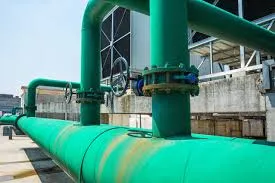
-
 Afrikaans
Afrikaans -
 Albanian
Albanian -
 Amharic
Amharic -
 Arabic
Arabic -
 Armenian
Armenian -
 Azerbaijani
Azerbaijani -
 Basque
Basque -
 Belarusian
Belarusian -
 Bengali
Bengali -
 Bosnian
Bosnian -
 Bulgarian
Bulgarian -
 Catalan
Catalan -
 Cebuano
Cebuano -
 China
China -
 China (Taiwan)
China (Taiwan) -
 Corsican
Corsican -
 Croatian
Croatian -
 Czech
Czech -
 Danish
Danish -
 Dutch
Dutch -
 English
English -
 Esperanto
Esperanto -
 Estonian
Estonian -
 Finnish
Finnish -
 French
French -
 Frisian
Frisian -
 Galician
Galician -
 Georgian
Georgian -
 German
German -
 Greek
Greek -
 Gujarati
Gujarati -
 Haitian Creole
Haitian Creole -
 hausa
hausa -
 hawaiian
hawaiian -
 Hebrew
Hebrew -
 Hindi
Hindi -
 Miao
Miao -
 Hungarian
Hungarian -
 Icelandic
Icelandic -
 igbo
igbo -
 Indonesian
Indonesian -
 irish
irish -
 Italian
Italian -
 Japanese
Japanese -
 Javanese
Javanese -
 Kannada
Kannada -
 kazakh
kazakh -
 Khmer
Khmer -
 Rwandese
Rwandese -
 Korean
Korean -
 Kurdish
Kurdish -
 Kyrgyz
Kyrgyz -
 Lao
Lao -
 Latin
Latin -
 Latvian
Latvian -
 Lithuanian
Lithuanian -
 Luxembourgish
Luxembourgish -
 Macedonian
Macedonian -
 Malgashi
Malgashi -
 Malay
Malay -
 Malayalam
Malayalam -
 Maltese
Maltese -
 Maori
Maori -
 Marathi
Marathi -
 Mongolian
Mongolian -
 Myanmar
Myanmar -
 Nepali
Nepali -
 Norwegian
Norwegian -
 Norwegian
Norwegian -
 Occitan
Occitan -
 Pashto
Pashto -
 Persian
Persian -
 Polish
Polish -
 Portuguese
Portuguese -
 Punjabi
Punjabi -
 Romanian
Romanian -
 Russian
Russian -
 Samoan
Samoan -
 Scottish Gaelic
Scottish Gaelic -
 Serbian
Serbian -
 Sesotho
Sesotho -
 Shona
Shona -
 Sindhi
Sindhi -
 Sinhala
Sinhala -
 Slovak
Slovak -
 Slovenian
Slovenian -
 Somali
Somali -
 Spanish
Spanish -
 Sundanese
Sundanese -
 Swahili
Swahili -
 Swedish
Swedish -
 Tagalog
Tagalog -
 Tajik
Tajik -
 Tamil
Tamil -
 Tatar
Tatar -
 Telugu
Telugu -
 Thai
Thai -
 Turkish
Turkish -
 Turkmen
Turkmen -
 Ukrainian
Ukrainian -
 Urdu
Urdu -
 Uighur
Uighur -
 Uzbek
Uzbek -
 Vietnamese
Vietnamese -
 Welsh
Welsh -
 Bantu
Bantu -
 Yiddish
Yiddish -
 Yoruba
Yoruba -
 Zulu
Zulu
Exploring the Benefits and Applications of Fiberglass Elbows in Modern Engineering Solutions
Understanding Fiberglass Elbows Applications and Benefits
Fiberglass elbows are essential components widely used in piping systems across various industries, including chemical processing, wastewater management, and construction. These specialized fittings are designed to change the direction of piping systems, allowing for smooth transitions and efficient flow of liquids and gases. Due to their unique properties, fiberglass elbows offer numerous advantages over traditional metal fittings.
One of the most significant benefits of fiberglass elbows is their corrosion resistance. Traditional metal pipes and fittings often succumb to rust and degradation when exposed to harsh chemicals and environmental conditions. In contrast, fiberglass elbows are composed of a composite material that is inherently resistant to many corrosive substances. This property makes them an ideal choice for industries where exposure to acids, alkalis, and other aggressive chemicals is common.
In addition to their corrosion resistance, fiberglass elbows exhibit excellent durability and weather resistance. They are less prone to cracking and can withstand extreme temperatures, making them suitable for both hot and cold applications. This durability extends the lifespan of piping systems, reducing the need for frequent replacements and minimizing maintenance costs.
Another key advantage is the lightweight nature of fiberglass elbows. Compared to metal fittings, fiberglass options are significantly lighter, which facilitates easier handling and installation. This characteristic can lead to reduced labor costs and streamlined construction timelines, as heavy lifting equipment may not be necessary for installation.
fiberglass elbows

Fiberglass elbows also offer superior insulation properties. They have lower thermal conductivity than metal, which means they can help maintain the temperature of the fluids within the pipes. This is particularly beneficial in processes that require precise temperature control, as it can enhance efficiency and reduce energy consumption.
Moreover, the smooth interior surface of fiberglass elbows minimizes turbulence during fluid flow. This feature helps in maintaining optimal flow rates and reduces the risk of blockages, which could lead to costly downtime in industrial operations. The design of fiberglass elbows can be tailored to create a variety of angles and configurations, ensuring they meet specific project requirements.
Lastly, fiberglass elbows are environmentally friendly. The manufacturing process often involves the use of recycled materials, and their longevity reduces waste associated with frequent replacements. As industries increasingly focus on sustainability, fiberglass products align well with green initiatives.
In conclusion, the use of fiberglass elbows in piping systems presents a myriad of advantages, including corrosion resistance, durability, lightweight construction, excellent insulation, and environmental benefits. As industries continue to evolve, the demand for reliable and efficient piping solutions, like fiberglass elbows, is likely to grow, making them an indispensable component in modern infrastructure and industrial applications.
Latest news
-
Exploring the Benefits of Top Hammer Drifter Rods for Enhanced Drilling PerformanceNewsJun.10,2025
-
High-Precision Fiberglass Winding Machine for GRP/FRP Pipe Production – Reliable & Efficient SolutionsNewsJun.10,2025
-
FRP Pipes & Fittings for Shipbuilding - Corrosion-Resistant & LightweightNewsJun.09,2025
-
Premium FRP Flooring Solutions Durable & Slip-ResistantNewsJun.09,2025
-
Premium Fiberglass Rectangular Tanks Durable & Lightweight SolutionNewsJun.09,2025
-
Tapered Drill String Design Guide Durable Performance & UsesNewsJun.09,2025









